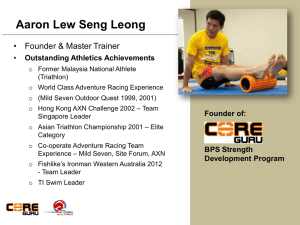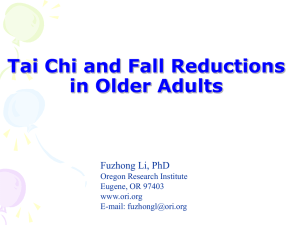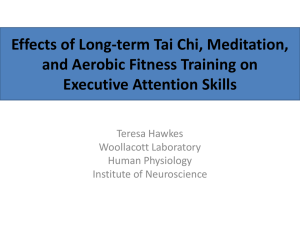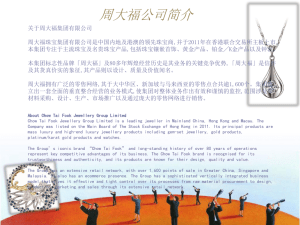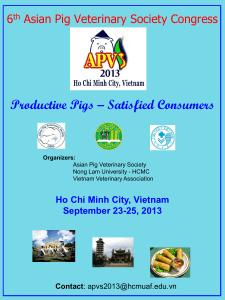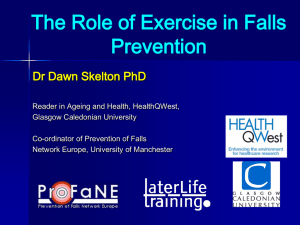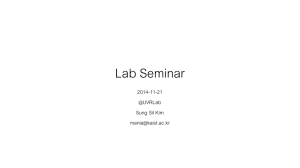A Randomized controlled trial of tai chi for tension headaches
advertisement
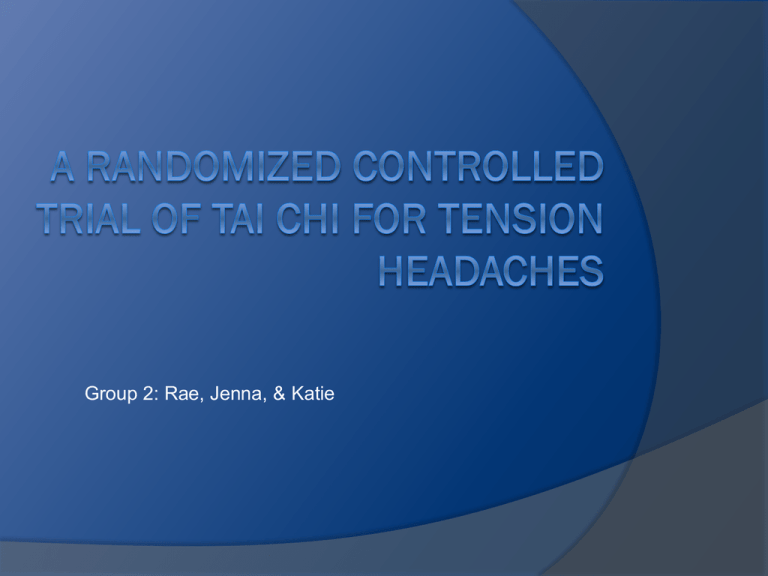
Group 2: Rae, Jenna, & Katie Purpose The purpose of this study was to determine the effect Tai Chi has on tension headaches Independent variable= practice of Tai Chi Dependent variable=level of pain with tension headaches and overall health Background Info It was found that tension type headaches account for 78% of all headaches These can be the result of stress, anxiety, fatigue, or anger Tai Chi is a Chinese form of exercise that improves health by changing mental focus, breathing, coordination, and relaxation Recent articles have shown that it can also help to improve balance, enhance cardiovascular and respiratory function, and improve mental health Methods (Participants) To be included in the study participants had to be between the ages of 20 and 65, they had to be able to undergo 30 minutes of exercise a day, and they had to be diagnosed with tension type headaches Participants were excluded if they had any headaches other than tension type ones (such as migraines), if they have had previous practice of Tai Chi, had severe hearing loss, or if they had respiratory, cardiovascular or neurological problems Methods (Participants) The participants were volunteers from the Los Angeles area that responded to advertisements from the UCLA Department of Medicine They posted listings in the local newspapers asking for adults experiencing tension headaches that wanted to receive free treatment Methods (Participants) Out of 122 potential participants only 47 met all the requirements needed to take place in this study Only 30 of the 47 participants completed the study 5 dropped out because of time delay between recruitment and intervention. 8 people dropped out of the treatment group during intervention and 4 dropped out of the control group In the end there was a total of 13 people in the treatment group and 17 people in the control group Methods (Treatment) The intervention group received sessions twice a week an hour each for 15 weeks They were taught the Yang style of Tai Chi (which is the most widely practiced style) They were taught by an instructor with over 20 years of experience in Tai Chi instruction Methods (Treatment) Their improvement was determined by the HealthRelated Quality-of-Life Measure and the Headache Impact Measure Health-Related Quality-of-Life Measure focused on eight domains of health: General health perceptions, physical functioning, role limitations due to physical problems, bodily pain, energy/fatigue, social functioning, role limitations due to emotion problems, and emotion well-being HIT was measured by: pain, ability to carry out usual activities, social functioning, energy/fatigue, cognitive functioning, and psychological distress These tests were given before the first treatment session and then again at week 5, 10, and 15 throughout the intervention period. Results There were no differences in gender or age between the 2 groups The intervention improved the scores on the Health-Related Quality-of-Life measure and reduced headache impact Six of the outcome variables had significant effects from the intervention: pain, energy/fatigue, social functioning, emotional well-being, the mental health summary score, and the HIT score External Validity The results of this study indicate that Tai Chi is effective in reducing headache impact and in improving perceptions of some aspects of physical and mental health The researchers note that these results apply only to people with tension-type headaches. Other types of headaches weren’t examined. External Validity Therefore, given the results, the conclusion that tai chi reduces tension headaches is a reasonable conclusion, showing good external validity! This makes sense since tension headaches are usually caused by stress, anxiety, or anger which can be reduced by doing something relaxing such as Tai Chi External Validity NOTE: If the tension headache is caused by fatigue, doing something such as Tai Chi that will cause the person to exert more energy and tire further, which would only make their headache worse! HOWEVER, fatigue related tension headaches aren’t very common, so this isn’t a concern for this study! Other types of headaches, such as migraines, may show differing results since they are caused by different things (according to mayo clinic, both genetics and environmental factors play a role) so Tai Chi may have no effect on them, which could be why they weren’t included in the study Construct Validity for Dependent Variable DP=level of pain with tension headaches and overall health This construct was defined by two different tests, the Health-Related Quality-of-Life Measure- which measure one’s overall health and the Headache Impact Measure –which measures pain, ability to carry out usual activities, social functioning, energy/fatigue, cognitive functioning, and psychological distress Construct Validity for Dependent Variable Threats to DV construct validity: Mono-method bias: Though they used two tests, there were two dependent variables so there was really only one test for each. Using multiple tests to assess overall health as well as levels of pain would have helped further strengthen their results. Construct Validity for Dependent Variable However, this isn’t much of a threat because the tests they used were good indicators of the constructs Therefore, the construct validity is strong! Construct Validity for Independent Variable IV= Practice of Tai Chi This construct was defined by using the Yang style of Tai Chi which is the most widely used, and therefore is a good measure of the construct Threats to IV Construct Validity: Mono-operational bias: Only used one form of Tai Chi. However, the researchers mention that all forms of Tai Chi are very similar in method and movement, so this isn’t really a threat! Construct Validity for Independent Variable Restricted Generalizability across constructs: Participants could become injured while participating in the Tai Chi, which would cause them to have to stop treatment, as well as become more stressed and anxious. This would cause their final test results to be lower. However, since Tai Chi is low impact, injury is unlikely so this isn’t really a threat! Therefore, the construct validity is strong! Internal Validity The results of this study do show that the intervention, which in this case would be Tai Chi, causes a change and improvement in the dependent variable, which is better known as tension headaches. The 47 participants were randomly assigned to two different groups. The subjects of this case were tested on their HRQOL (health-related quality of life) and HIT (headache status) before, during, and after the study. Internal Validity This design provides evidence of temporal precedence by the intervention of Tai Chi taking place before the decrease in tension headaches. This study also shows covariation because the results show that when there is Tai Chi, there is fewer or less intense tension headaches. With this study having a multi-group design and random assignment, it eliminates any single or multi-group threats. Internal Validity Social Interaction Threats Diffusion of Imitation of Treatment ○ The control group, which was put on a Tai Chi wait list, may have learned about the treatment and decided to do it on their own. Resentful Demoralization ○ Upon finding out about the treatment, the control group members could become more discouraged or angry. Internal Validity R X O X R X X
